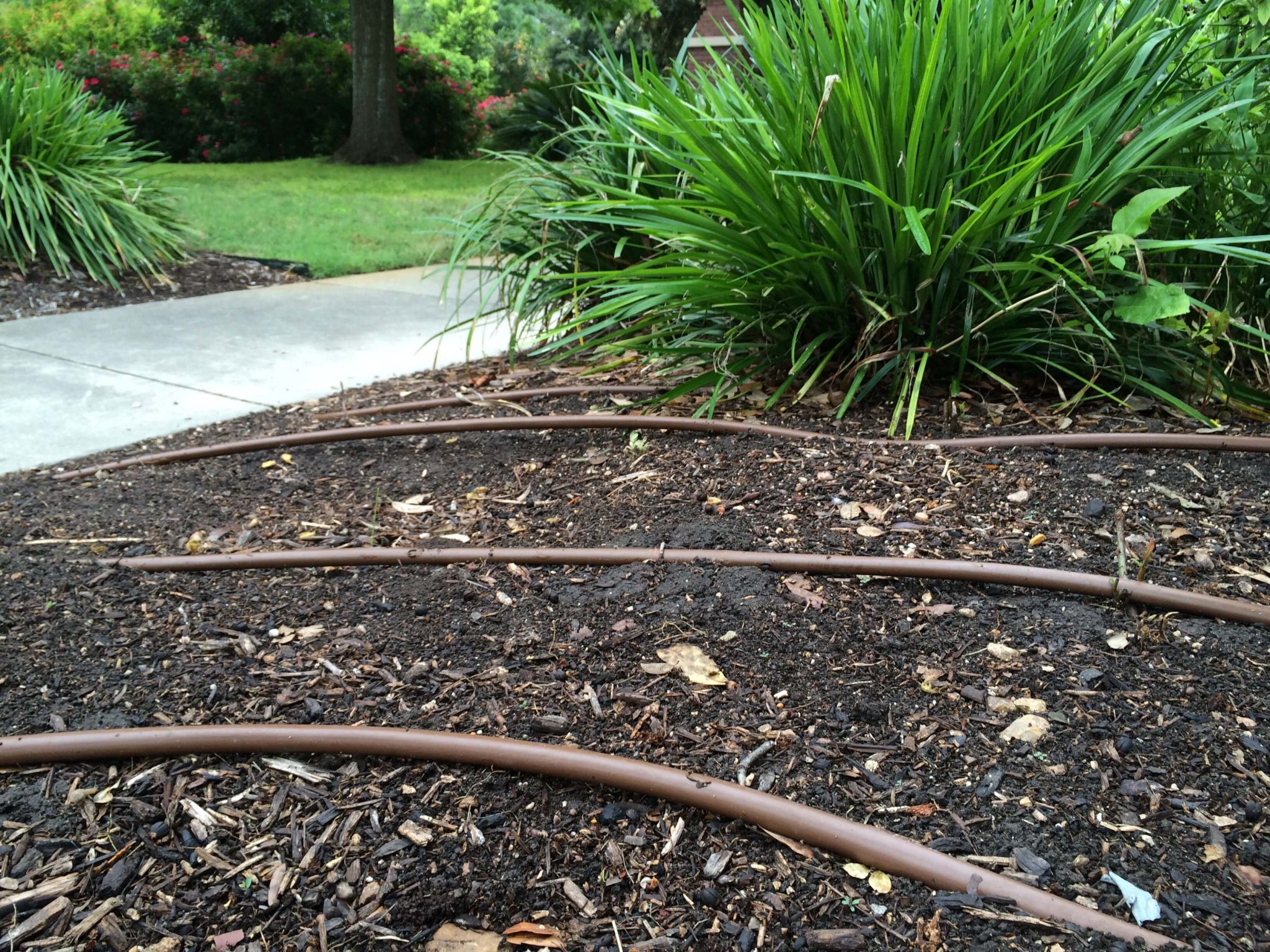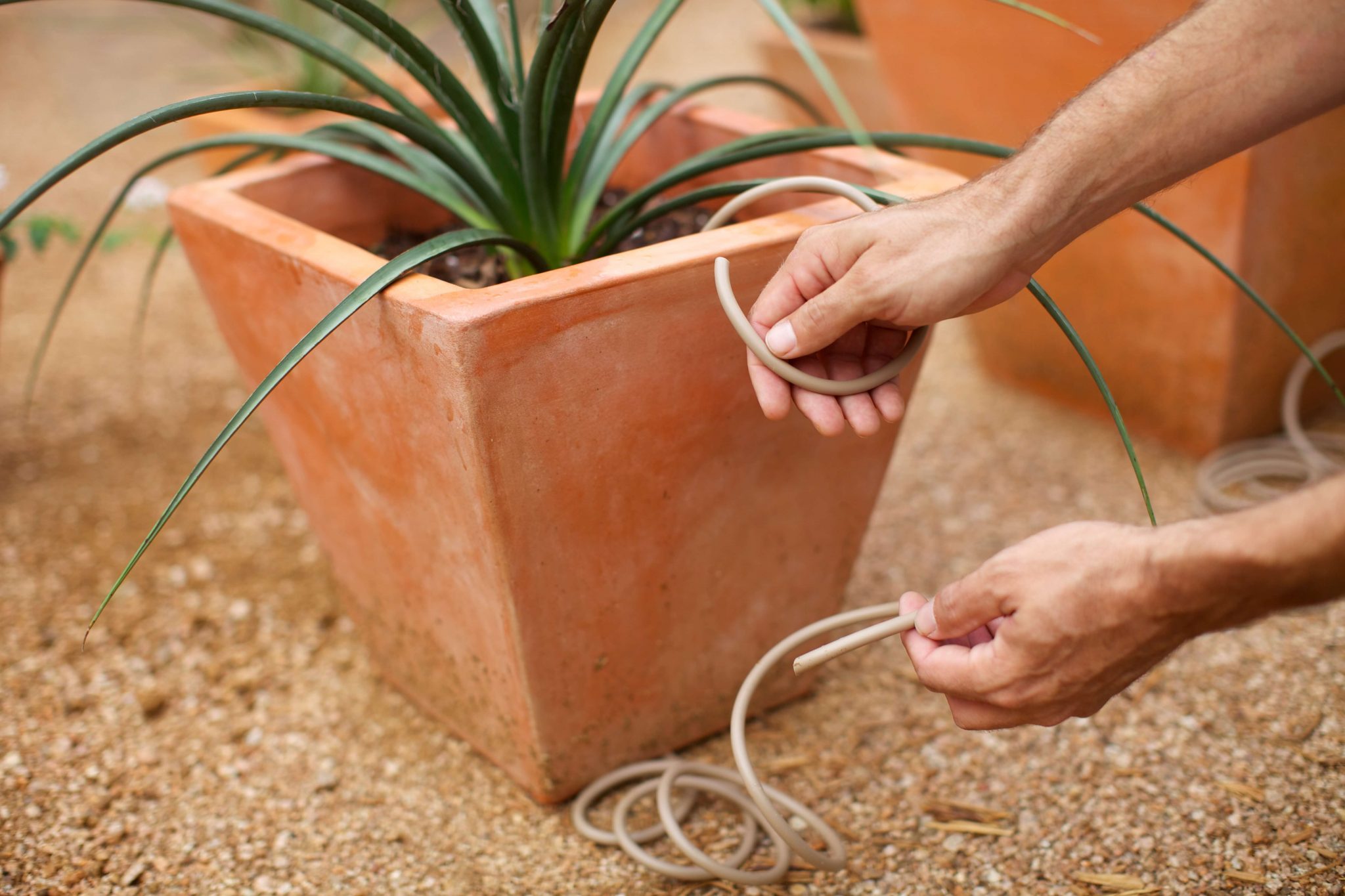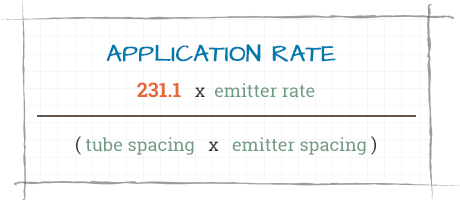If you want to save water (and money) with drip irrigation, it all comes down to selecting the right design for your landscape, installing it properly and scheduling it correctly.
Drip irrigation saves water, right? It’s a question I hear quite often, and the correct answer is maybe. It all depends on your landscape design, drip irrigation type and, most of all, the schedule on the controller.
We received many requests to follow-up on last week’s spray and rotor calculations, so we thought we’d talk about the types of drip irrigation, proper installation of them and how to schedule run times accordingly.
Drip irrigation comes in two designs: point source and inline tubes.

Point Source Drip Irrigation
Point source is the old-fashioned style of drip irrigation with many small tubes coming from a communal head or a long length of black tubing. This form of drip is great for widely spaced plants that are quickly established. Point source drip irrigation may be removed after 90-120 days and the plants are on natural rainfall only.
Scheduling of point source is fairly simple. The emitters on the end of the “spaghetti’ tubes come in rates of half-gallon per hour, 1 gallon per hour and 2 gallons per hour. As I indicated last week, horticulturalists and foresters apply water in inches per hour. One inch of water is .62 gallons so the half-gallon per hour emitter is appropriate for once a week watering. Remember, all plants, with the exception of vegetables and seasonal color, prefer once a week to once a month watering.
Initially, place the emitters next to the plant. Later, move the emitter away from the plant as the roots grow. This is one great advantage to point source drip irrigation: it can be moved to follow plant roots.

Inline Tubes Drip Irrigation
Inline tubes, on the other hand, are great because they provide a uniform amount over a wider area and are inconspicuous. Inline tubes are good for landscape designs incorporating a lot of plants in close proximity and can be spaced 2 or even 3 feet apart.
Scheduling the run time with inline tubes drip irrigation is a little more complicated than point source. Like the previous article, there is some math involved.
You need to know the emitter rate, spacing between tubes, and spacing between emitters along the tube. We recommend specifications that are designed for South Texas plants and to conserve water. These are .6 gallons per hour (emitter rate), 18 inches (between tubes) and 18 inches (between emitters along the tube). Here is the formula:
Then, plug the application rate number into the run time formula to calculate how long your sprinkler needs to run.
All that said, if you want to save water with drip irrigation, it all comes down to selecting the right design for your landscape, installing it properly and scheduling it correctly.
Your plants will appreciate it and so will your bank account.


